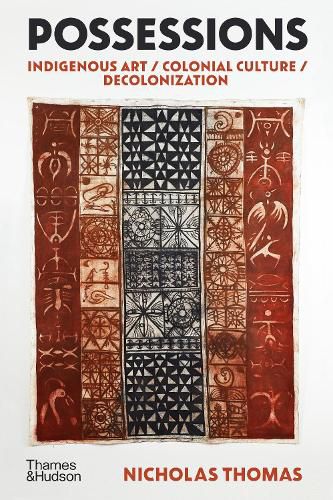Readings Newsletter
Become a Readings Member to make your shopping experience even easier.
Sign in or sign up for free!
You’re not far away from qualifying for FREE standard shipping within Australia
You’ve qualified for FREE standard shipping within Australia
The cart is loading…






The arts of Africa, Oceania and native America famously inspired twentieth-century modernist artists such as Picasso, Matisse and Ernst. The politics of such stimulus, however, have long been highly contentious: was this a cross-cultural discovery to be celebrated, or just one more example of Western colonial appropriation?
This revelatory book explores cross-cultural art through the lens of settler societies such as Australia and New Zealand, where Europeans made new nations, displacing and outnumbering but never eclipsing native peoples. In this dynamic of dispossession and resistance, visual art has loomed large. Settler artists and designers drew upon Indigenous motifs and styles in their search for distinctive identities. Yet powerful Indigenous art traditions have asserted the presence of First Nations peoples and their claims to place, history and sovereignty. Cultural exchange has been a two-way process, and an unpredictable one: contemporary Indigenous art draws on global contemporary practice, but moves beyond a bland affirmation of hybrid identities to insist on the enduring values and attachment to place of Indigenous peoples.
$9.00 standard shipping within Australia
FREE standard shipping within Australia for orders over $100.00
Express & International shipping calculated at checkout
Stock availability can be subject to change without notice. We recommend calling the shop or contacting our online team to check availability of low stock items. Please see our Shopping Online page for more details.
The arts of Africa, Oceania and native America famously inspired twentieth-century modernist artists such as Picasso, Matisse and Ernst. The politics of such stimulus, however, have long been highly contentious: was this a cross-cultural discovery to be celebrated, or just one more example of Western colonial appropriation?
This revelatory book explores cross-cultural art through the lens of settler societies such as Australia and New Zealand, where Europeans made new nations, displacing and outnumbering but never eclipsing native peoples. In this dynamic of dispossession and resistance, visual art has loomed large. Settler artists and designers drew upon Indigenous motifs and styles in their search for distinctive identities. Yet powerful Indigenous art traditions have asserted the presence of First Nations peoples and their claims to place, history and sovereignty. Cultural exchange has been a two-way process, and an unpredictable one: contemporary Indigenous art draws on global contemporary practice, but moves beyond a bland affirmation of hybrid identities to insist on the enduring values and attachment to place of Indigenous peoples.